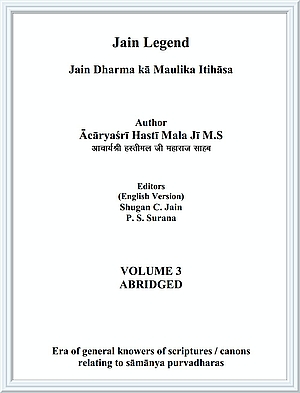Serious study and analysis of ancient manuscripts bring forth the significant and amazing impact of Yāpanīya tradition on Bhaṭṭāraka tradition. Some of these are listed below:
- The first significant revelation comes from the fact that Śravaṇabelagolā was the first seat of Bhaṭṭāraka tradition. This seat was also started by the first ācārya of Yāpanīya tradition Nemicandra, who was the religious guru of Cāmuṇḍa Rāya, the chief of the army of brave King of Gaṃga Dynasty Rācamalla. Ācārya Nemicandra also had the world famous colossus statue of Lord Gommaṭeśwara installed and consecrated by the King here. This leads us to conclude that that the Bhaṭṭāraka tradition was started and controlled by Yāpanīya sect and hence wielded their influence on it.
- Since the birth of temple dwellers congregation till the era of supremacy of Yāpanīya sect, different Jain congregations used to get only the idols of Tīrthaṃkaras installed. The practice of getting idols installed of other liberated souls or deities by them was not prevalent. During the period of supremacy of Yāpanīya traditions, idols of deities like Jwālāmālinī, Padmāvatī etc also got erected. Even separate temples of these deities were built. Keeping these developments in mind, we conclude that Yāpanīya sect had its impact in erecting of monolithic idol of Bāhubalīor Gomaṭeśwara in Śravaṇabelagolā.
- Female monks as Bhaṭṭārakas: Yāpanīya congregation not only influenced Bhaṭṭāraka tradition but they also gave full powers to female monks and anointed them to the post of Bhattārakas also.
Another fact supporting the impact of Yāpanīya tradition on Bhaṭṭāraka tradition emerges from the knowledge that a Jain university existed in Tirucāraṇtthumalai in ancient times. A number of rock engravings found in Kalugumalai indicate that a female Bhaṭṭāraka imparted very high level of education of Jain doctrine in that university and sent its graduates all over the country to teach and preach Jainism.
All these facts lead us to conclude that the Yāpanīya sect primarily and temple dwellers congregation also which went into nonexistence five to centuries ago had also wielded their influence on Bhaṭṭāraka tradition. The above facts also bring to light that during the middle period, the Bhaṭṭāraka traditions of the three sects i.e. Digambara, Śvetāmbara and Yāpanīya sects coexisted separately. The Bhaṭṭārakas tradition of Yāpanīya sect also became nonexistents Alongwith Yāpanīya sect. After a short time of start of Bhaṭṭāraka tradition of Śvetāmbara sect, it got replaced by Śrīpūjya tradition and later on to Yati tradition which exists even today. In middle ages, Yati tradition was in great prominence also. In this way, the Bhaṭṭārakas tradition as it exists today belongs only to Digambara sect.
 Acharya Hasti Mala
Acharya Hasti Mala
